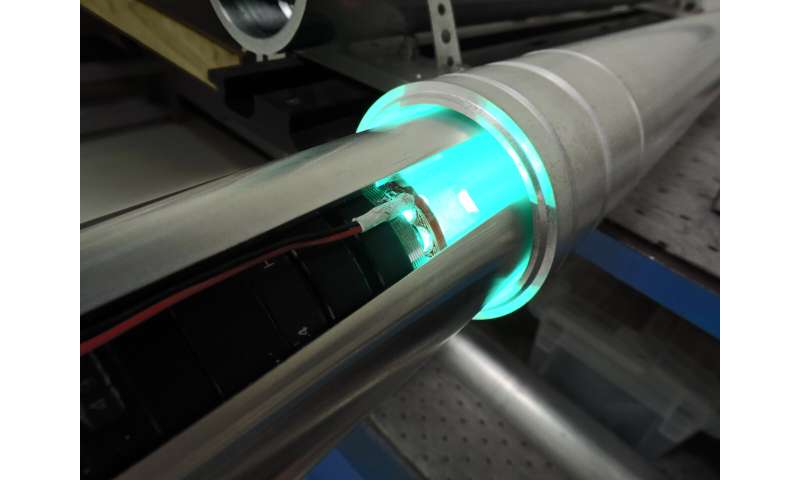Researchers develop imaging technology to verify component quality for international fusion project

Inspection technology developed by Oak Ridge National Laboratory will help deliver plasma heating to the ITER international fusion facility.
A camera-and-software system was needed to inspect prototypes of specialized tubes called waveguides. Their precisely grooved inner walls direct microwaves that heat plasma, helping fuse hydrogen isotopes and demonstrate 500 million watts of fusion power.
ORNL researchers have developed an imaging system pairing a cone-shaped mirror with a lens and a light to illuminate the pipe interior, which is 50 millimeters across. Using custom ray-tracing software, researchers created an angled window in front of the camera to minimize light reflections that might interfere with visibility of flaws. Using other ORNL software, the system was able to combine hundreds of 360-degree, high-resolution photos into a single image in real time.
"If interior features that focus microwave radiation are damaged or improperly machined, microwaves could arc and cause failure," said ORNL's Alex Melin. Validating the quality of the waveguides will protect the safety and effectiveness of the plasma heating process, helping ITER prove the feasibility of fusion energy.
Provided by Oak Ridge National Laboratory